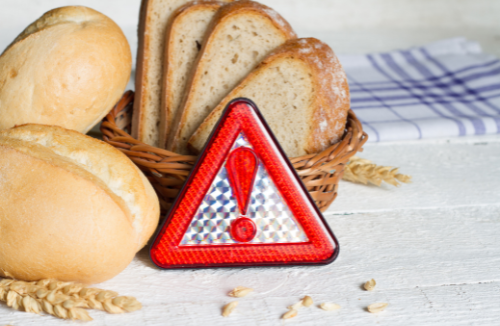Eating Disorders in Children are a major global concern, with poor eating habits leading to serious health problems that can have lasting effects. This analysis delves into the statistics surrounding these issues, offering medical opinions and reliable sources. It highlights the importance of promoting healthy eating habits in children by following a healthy eating meal plan and including foods to eat that support their growth and development. By doing so, we can reduce the risks associated with Eating Disorders in Children. The article also provides useful links for further exploration of the data related to each condition.

The Rise of Eating Disorders In Children: Food Allergies
and Intolerances
Food allergies and intolerances are on the rise among children, presenting significant challenges for both families and healthcare providers. According to the Food Allergy Research & Education (FARE) organization, approximately 1 in 13 children in the United States has a food allergy, which equates to about two children in every classroom. Food allergies occur when the immune system mistakenly identifies a harmless food protein as a threat, triggering an allergic reaction. Common allergens include peanuts, tree nuts, milk, eggs, wheat, soy, fish, and shellfish. These reactions can range from mild symptoms, such as hives and itching, to severe and potentially life-threatening conditions, such as anaphylaxis, which requires immediate medical attention.
The Role of Dietary Choices in Allergies
Poor eating habits and dietary choices can play a role in the development and exacerbation of food allergies and intolerances. Introducing allergenic foods without proper guidance, especially at a young age, can increase the risk of an allergic reaction. The timing and method of introducing these foods are crucial. For instance, recent studies suggest that introducing peanuts and other allergenic foods early, rather than delaying exposure, may help reduce the risk of developing a food allergy, a concept that has led to updated guidelines by health organizations such as the American Academy of Pediatrics (AAP).
However, parents often struggle with the balance of introducing potential allergens while trying to adhere to a clean eating meal plan or healthy eating meal plan. Without proper guidance from healthcare professionals, they may inadvertently restrict important nutrients or fail to expose their child to a variety of foods necessary for building tolerance.
Food Intolerances: A Different but Related Issue
In contrast to food allergies, food intolerances do not involve the immune system but can still cause significant discomfort and eating disorders in children. Food intolerances occur when the body has difficulty digesting certain foods, such as lactose in dairy products or gluten in wheat. Symptoms can include bloating, abdominal pain, diarrhea, and headaches. These conditions can affect a child’s ability to maintain a balanced and healthy diet, leading to nutritional deficiencies and impacting overall well-being.
For example, lactose intolerance, which is the inability to digest lactose, the sugar found in milk and dairy products, can lead to calcium deficiency if dairy is not replaced with other calcium-rich foods. Similarly, gluten intolerance or celiac disease, a severe autoimmune disorder triggered by gluten, can result in malnutrition due to poor nutrient absorption in the intestines.

The Impact on Daily Life and Nutrition
The impact of food allergies and intolerances on a child’s daily life can be profound. Children with food allergies often need to follow strict avoidance diets, which can limit their exposure to various foods and nutrients. This can make it challenging to create a diverse and balanced meal plan, which is essential for their growth and development. Additionally, the social and psychological impacts of managing food allergies—such as anxiety about accidental exposure, feeling different from peers, or being excluded from social activities involving food—can also affect a child’s quality of life.
For parents, managing a child’s food allergy or intolerance involves careful meal planning, constant vigilance, and often, the use of special products that may be more expensive or less accessible. Label reading becomes a routine activity, and dining out or attending social events can be fraught with concerns about cross-contamination or hidden allergens.
Current Trends and Future Directions
Recent trends in food allergies and intolerances have prompted increased research into the underlying causes and potential treatments. For example, the development of oral immunotherapy (OIT) for peanut allergies is one of the promising approaches, where small, controlled doses of the allergen are given to build tolerance over time. However, this treatment is still under study and must be done under strict medical supervision.
Educational campaigns by organizations like FARE have also been crucial in raising awareness about food allergies and intolerances, promoting early detection, and advocating for safer environments for children with these conditions. Schools, daycares, and other institutions are becoming more equipped to manage food allergies, with staff trained to recognize and respond to allergic reactions.
For parents looking for more detailed information on managing food allergies and intolerances:
– Including dietary guidelines and resources, FARE’s website offers a wealth of information and practical tips: [Food Allergy Research & Education (FARE)](https://www.foodallergy.org/).
Conclusion: Promoting Healthy Eating Habits for a Healthier Future
The statistics surrounding health problems resulting from poor eating habits in children highlight the urgent need for preventive measures. By adopting a healthy eating meal plan and encouraging children to choose nutritious foods to eat, we can combat the rising prevalence of obesity, malnutrition, anemia, dental caries, and food allergies. Parents, caregivers, and educators must work together to instill lifelong healthy eating habits in children, ensuring they grow up to be healthy, happy, and thriving adults.
For more detailed information on these health issues and their prevention:
– Visit the provided links to access the full data and expert opinions.
– Therapeutic Food Recipes for Children: A Natural Approach to Minor Illnesses

